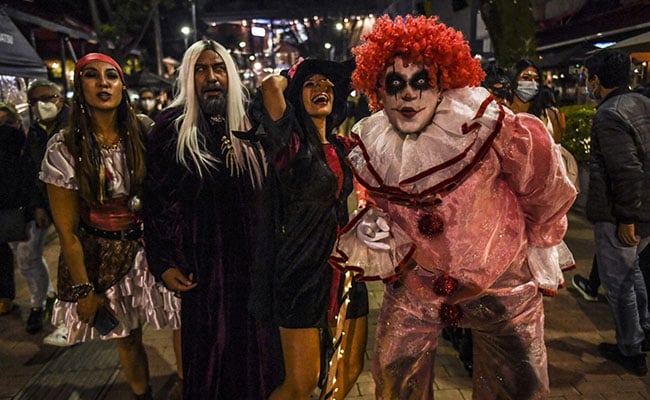From pumpkins to pranks and communication with the dead, Halloween is a patchwork holiday stitched together with religious and occult traditions that span across centuries.
The history of this festival originates from the time of Celts, a collection of tribes with origins in central Europe. Their culture spread across the continent more than 2000 years ago. They used to celebrate the end of the harvest season with a festival called Soin on October 31.
It also marked the Celtic New Year and was considered a time between years, a magical time when the ghosts of the dead walked the earth.
On Soin the villagers gathered and lit bonfires to drive the dead back to the spirit world and keep them away from the living, however as the Catholics Church''s influence grew in Europe, it frowned on the pagan rituals like Soin. Later in the 7th century, the Vatican began to merge it with a church-sanctioned holiday.
So November 1 was designated ''All Saints Day'' to honour martyrs (mostly for family members or friends). All Saints Day was known then as Hallowmas. Hallow means holy or saintly; hence it roughly translated to ''mass of the saints''.
The night before October 31 was All Hallows Eve, which gradually morphed into Halloween. Celts believed that on the night of the 31st, the boundary between the living and spirit world becomes thinner.
The holiday came to America with the wave of Irish immigrants during the potato famine of the 1840s.
They brought along several of their holiday customs with them including bobbing for apples and playing tricks on neighbours like removing dates from the front of houses.
The history of this festival originates from the time of Celts, a collection of tribes with origins in central Europe. Their culture spread across the continent more than 2000 years ago. They used to celebrate the end of the harvest season with a festival called Soin on October 31.
It also marked the Celtic New Year and was considered a time between years, a magical time when the ghosts of the dead walked the earth.
On Soin the villagers gathered and lit bonfires to drive the dead back to the spirit world and keep them away from the living, however as the Catholics Church''s influence grew in Europe, it frowned on the pagan rituals like Soin. Later in the 7th century, the Vatican began to merge it with a church-sanctioned holiday.
So November 1 was designated ''All Saints Day'' to honour martyrs (mostly for family members or friends). All Saints Day was known then as Hallowmas. Hallow means holy or saintly; hence it roughly translated to ''mass of the saints''.
The night before October 31 was All Hallows Eve, which gradually morphed into Halloween. Celts believed that on the night of the 31st, the boundary between the living and spirit world becomes thinner.
The holiday came to America with the wave of Irish immigrants during the potato famine of the 1840s.
They brought along several of their holiday customs with them including bobbing for apples and playing tricks on neighbours like removing dates from the front of houses.
From pumpkins to pranks and communication with the dead, Halloween is a patchwork holiday stitched together with religious and occult traditions that span across centuries.
The history of this festival originates from the time of Celts, a collection of tribes with origins in central Europe. Their culture spread across the continent more than 2000 years ago. They used to celebrate the end of the harvest season with a festival called Soin on October 31.
It also marked the Celtic New Year and was considered a time between years, a magical time when the ghosts of the dead walked the earth.
On Soin the villagers gathered and lit bonfires to drive the dead back to the spirit world and keep them away from the living, however as the Catholics Church''s influence grew in Europe, it frowned on the pagan rituals like Soin. Later in the 7th century, the Vatican began to merge it with a church-sanctioned holiday.
So November 1 was designated ''All Saints Day'' to honour martyrs (mostly for family members or friends). All Saints Day was known then as Hallowmas. Hallow means holy or saintly; hence it roughly translated to ''mass of the saints''.
The night before October 31 was All Hallows Eve, which gradually morphed into Halloween. Celts believed that on the night of the 31st, the boundary between the living and spirit world becomes thinner.
The holiday came to America with the wave of Irish immigrants during the potato famine of the 1840s.
They brought along several of their holiday customs with them including bobbing for apples and playing tricks on neighbours like removing dates from the front of houses.
0 Comentários
0 Compartilhamentos
0 Anterior




